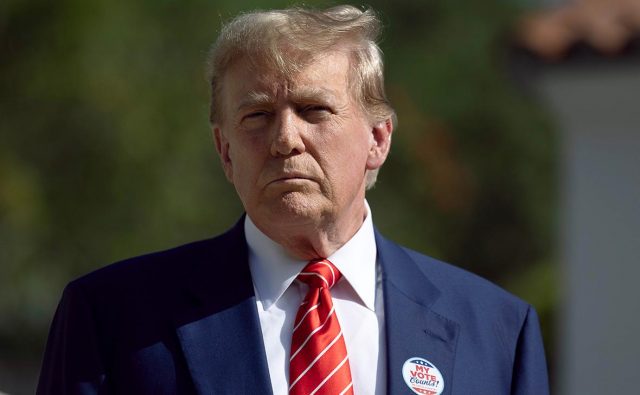- Despite the weakness of sentiment data, the Dollar remains on the rise thanks to the Fed's bets.
- CPI data released this week make a cut in June unlikely.
- Susan Collins and Austan Goolsbee of the Fed were very optimistic.
The US Dollar Index (DXY) surpasses 106.00, reaching its highest level since early November. The index's upward movement is largely due to rising US yields and inflation data, which favors the US dollar. Additionally, Federal Reserve (Fed) officials expressed less chance of rate cuts this year, and an increase in hawkish bets is another driver driving the currency.
On Wednesday, inflation as measured by the US Consumer Price Index (CPI) accelerated in March, pushing up US Treasury yields, and markets now expect a more hawkish Fed.
Daily market developments summary: DXY shakes off weak sentiment data thanks to hawkish bets
- A decline in US consumer confidence was recorded in early April, as indicated by the University of Michigan's Consumer Sentiment Index, which fell to 77.9 from 79.3 in March, more timid than expected.
- Declines were recorded in the sentiment indices of both current conditions and consumer expectations, which fell to 79.3 and 77 from 82.5 and 77.4, respectively.
- On Wednesday, the Consumer Price Index (CPI), published by the US Bureau of Labor Statistics, rose to 3.5% annually in March, up from 3.2% in February. The core CPI also accelerated.
- Due to rising inflation numbers, a hawkish response from the Fed is increasingly expected, which has caused US Treasury yields to rise, with consequent strengthening of the US Dollar (USD). ).
- The Boston Fed's Susan Collins said there could only be two rate cuts this year. Austan Goolsbee also warned that the Fed could take action if personal consumption spending accelerates.
- The odds of a cut in July are reportedly less than 60%, down from the previous probability of 99% before the inflation data was released. The odds of a second rate cut in December stand at 75%.
- Market hopes for a rate cut in June have also declined to around 20%.
DXY technical analysis: DXY bullish, momentum indicators favor buyers, correction likely
The daily chart indicators reflect favorable buying momentum. The Relative Strength Index (RSI), with its positive slope and placement in positive territory, suggests that the bulls are gaining ground in the currency price action. However, the RSI is now in overbought territory, which could hint that a correction is coming.
Meanwhile, the moving average convergence divergence (MACD) also supports this bullish view as the green bars on the histogram show an upward trajectory, indicating that buyers are in control.
US Dollar FAQ
What is the US Dollar?
The United States Dollar (USD) is the official currency of the United States of America, and the “de facto” currency of a significant number of other countries where it is in circulation alongside local banknotes. According to 2022 data, it is the most traded currency in the world, with more than 88% of all global currency exchange operations, equivalent to an average of $6.6 trillion in daily transactions.
After World War II, the USD took over from the pound sterling as the world's reserve currency.
How do the decisions of the Federal Reserve affect the Dollar?
The single most important factor influencing the value of the US Dollar is monetary policy, which is determined by the Federal Reserve (Fed). The Fed has two mandates: achieve price stability (control inflation) and promote full employment. Your main tool to achieve these two objectives is to adjust interest rates.
When prices rise too quickly and inflation exceeds the 2% target set by the Fed, the Fed raises rates, which favors the price of the dollar. When Inflation falls below 2% or the unemployment rate is too high, the Fed can lower interest rates, which weighs on the Dollar.
What is Quantitative Easing and how does it influence the Dollar?
In extreme situations, the Federal Reserve can also print more dollars and enact quantitative easing (QE). QE is the process by which the Fed substantially increases the flow of credit into a clogged financial system. This is an unconventional policy measure used when credit has dried up because banks do not lend to each other (for fear of counterparty default). It is a last resort when a simple lowering of interest rates is unlikely to achieve the necessary result. It was the Fed's weapon of choice to combat the credit crunch that occurred during the Great Financial Crisis of 2008. It involves the Fed printing more dollars and using them to buy US government bonds, primarily from financial institutions. QE usually leads to a weakening of the US Dollar.
What is quantitative tightening and how does it influence the US dollar?
Quantitative tightening (QT) is the reverse process by which the Federal Reserve stops purchasing bonds from financial institutions and does not reinvest the principal of maturing portfolio securities in new purchases. It is usually positive for the US dollar.
Source: Fx Street
I am Joshua Winder, a senior-level journalist and editor at World Stock Market. I specialize in covering news related to the stock market and economic trends. With more than 8 years of experience in this field, I have become an expert in financial reporting.







